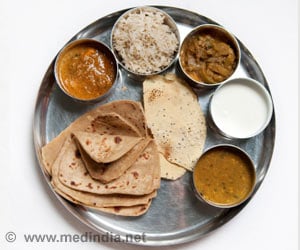Whatever the economic progress achieved by India, its record on the health front leaves a lot to be desired. Better health management demands more professionals, experts say.
Whatever the economic progress achieved by India, its record on the health front leaves a lot to be desired. Better health management demands more professionals, experts say.
Come summer, chikungunya and dengue fever, kala azar, measles and malaria repeatedly ravage the country. Still one doesn’t see much of a pro-active measure in neutralizing such outbreaks.The World Health Organisation has noted that India fares unfavourably with even low-income countries with regard to medical human resources.
The number of physicians per 10,000 of the population is seven, which is on a par with low-income countries. Physicians employed in the public sector are a paltry two per 10,000 people. The number of nurses per 10,000 people in India is eight, while for the world it is 33 and 16 for the low-income countries.
The demand for nurses is expected to surge to 10.5 lakh in 2012 from the current availability of 3.7 lakh. And the shortage of medical professionals is expected to accentuate further, despite 250 medical colleges under the modern system of medicine and over 400 colleges under the Indian system of medicine and homeopathy.
The country produces over 25,000 doctors annually in the modern system of medicine and a similar number of homeopathy practitioners, as well as nurses and other paramedical professionals. Despite these numbers, the country continues to face an acute shortage of manpower on the health front. The WHO has noted that a serious issue in human resource management has cropped up, leaving huge gaps in critical resources management in health, especially in government institutions. This is all the more so in rural areas that provide healthcare to the poorer segments of the population, writes C. J. Punnathara in Business Line.
A large number of vacant posts are left unfilled in rural health centres and paucity of doctors is reported at the primary level in government hospitals. The positions for specialists in government hospitals in the rural areas are a lot worse.
Advertisement
Similarly, vacancies continue for the posts of laboratory technicians, radiographers and other paramedical professionals, which have serious service implications, particularly for programmes such as malaria and tuberculosis, the WHO observed. Low priority given to in-service training, inadequate staffing in training institutions and poor quality of trainers are other causes of concern.
Advertisement
Measures include recruiting doctors on contract basis, compulsory rural posting for certain period, earmarking certain percentage of post-graduate seats for doctors who have served in rural areas, and provision of rural service allowance etc.
Proposals for medical practitioners to undergo knowledge and skill up-gradation and re-certification every five years were proposed in the Five-Year Plans. But none of these measures is able to redress the malaise inherent in the system.
If the economic momentum persists, the demand for medical health facilities from Rural India would far exceed supply.
Besides, there has also been a growing exodus of medical professionals from India. The recent favourable rulings in the UK favouring international medical graduates, mainly of Indian origin, could accelerate exodus of fresh graduates from the country.
The annual migration out of India would be of the order of 1,400 per year — almost five per cent of the annual output from Indian medical colleges to just one country alone.
Migration to other rich countries of Europe and the US, Australia, New Zealand, Dubai and West Asia have also been on the rise. And it takes years of dedicated training and several lakhs of rupees to transform a lay student into a budding medical professional.
So how to address the growing mismatch between the demand for medical professionals and the numbers available in India?
The answer lies in creating more medical colleges, nursing schools and professional training institutes. As more students pass out of these institutions, the best would obviously seek greener and richer dividends abroad, But a large majority will stay back, perhaps preferring to settle down in urban areas, still the numbers would be enough to take care of the rural health services too.
Source-Medindia
GPL/L







